Educator, naturalist, and photographer supreme, Jim Gain’s Reflections of the Natural World offers a trove of concise lessons in natural history as well as excursions into the beautiful world of avian diversity as revealed in images as far away as Central and South America and as close to home as your own back yard. We’re proud to publish episodes number 23 and 24 in Jim’s series, Learn 100 Common Valley Birds. ed.
Learn 100 Common Valley Birds #23: LBBs (Little Brown Birds)
Oak Titmouse – Species #36
The Oak Titmouse (Baeolophus inornatus) is a small, non-migratory bird species native to the oak woodlands of California’s Central Valley. These birds are known for their distinctive gray-brown plumage and prominent black eyes. They also have a small crest on their head which they can raise or lower depending on their mood.
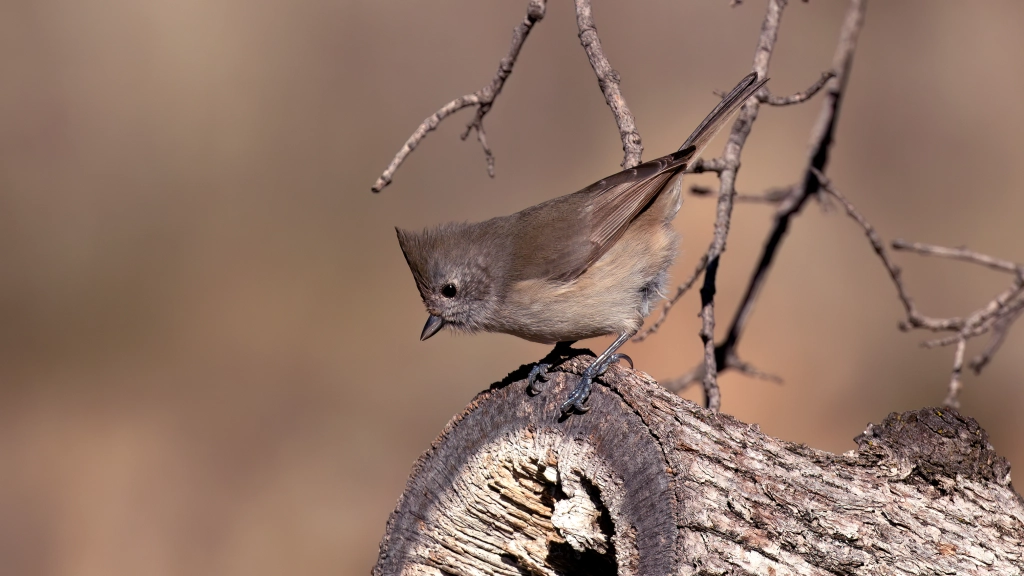
The Oak Titmouse is a year-round resident of the oak woodlands and chaparral habitats of the Central Valley. The bird feeds on insects, seeds, and acorns, which it forages for in the trees and shrubs of its habitat. The Oak Titmouse is a cavity nester and typically nests in old woodpecker holes or other natural cavities in trees.
The bird is known for its loud and distinctive calls, which include a buzzy “peter-peter-peter” and a whistled “see-see-see.” The Oak Titmouse is a non-migratory bird and does not typically travel far from its nesting site. The bird is considered an indicator species of the health of oak woodlands and is of conservation concern due to habitat loss and fragmentation.
Bushtit – Species #37
The Bushtit (Psaltriparus minimus) is a small, round bird found in the Central Valley of California. They have a distinctive appearance, with fluffy, grayish-brown plumage that covers their entire body, except for their black eyes and tiny, stubby beak. Their tail is relatively short, and their wings are rounded, allowing them to maneuver easily through dense vegetation.
Bushtits are highly social birds, living in flocks of up to 40 individuals. They are also highly active, constantly flitting and hopping through bushes and trees, in search of insects, spiders, and other small invertebrates. They build intricate, hanging nests made of spider silk, lichen, and other plant materials, often in clusters of up to a dozen, with each nest being occupied by a single breeding pair.
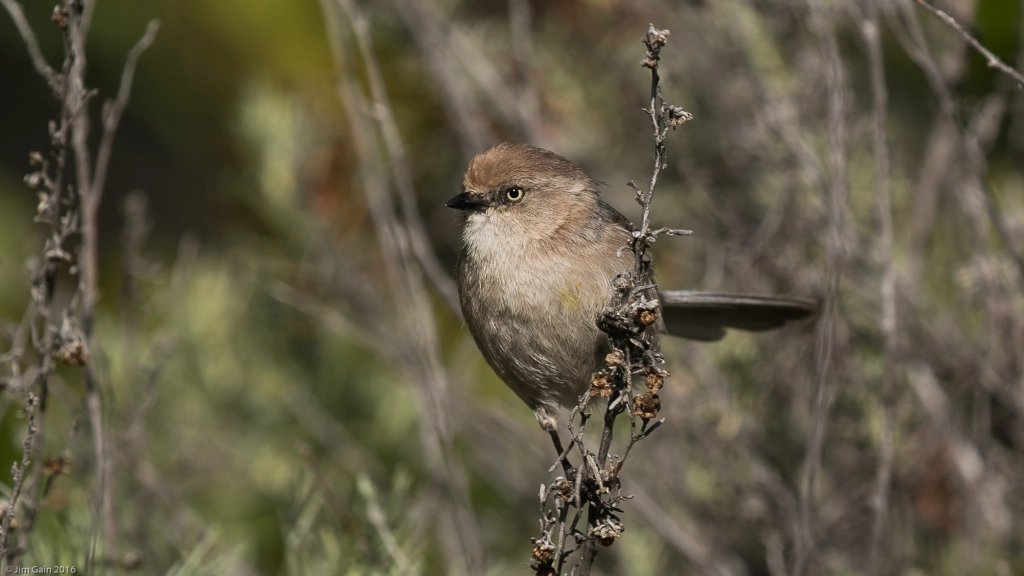
Bushtits are also known for their fascinating cooperative breeding behavior. In some cases, adult offspring from previous breeding seasons remain with their parents to help raise younger siblings. This helps to increase the survival rate of the entire family, and it also allows the older siblings to gain valuable experience for their own future breeding efforts. All in all, the Bushtit is a fascinating and charismatic bird, and it is an important part of the rich biodiversity of the Central Valley of California.
Learn 100 Common Valley Birds #24: Tree Huggers
White-breasted Nuthatch – Species #38
The White-breasted Nuthatch (Sitta carolinensis) is a small songbird with a distinctive black and white coloration, a blue-gray back, and a white face and belly. The males and females are similar in appearance and can be difficult to distinguish without close observation. The bird’s bill is relatively long and straight, which helps it probe for insects and other small prey in tree bark.
In the Central Valley of California, the White-breasted Nuthatch can be found year-round in oak woodlands and mixed-conifer forests. It is a non-migratory species, so individuals do not typically leave their range during the winter months. The birds are known for their acrobatic foraging behavior, often creeping upside-down or sideways along tree trunks and branches in search of food.
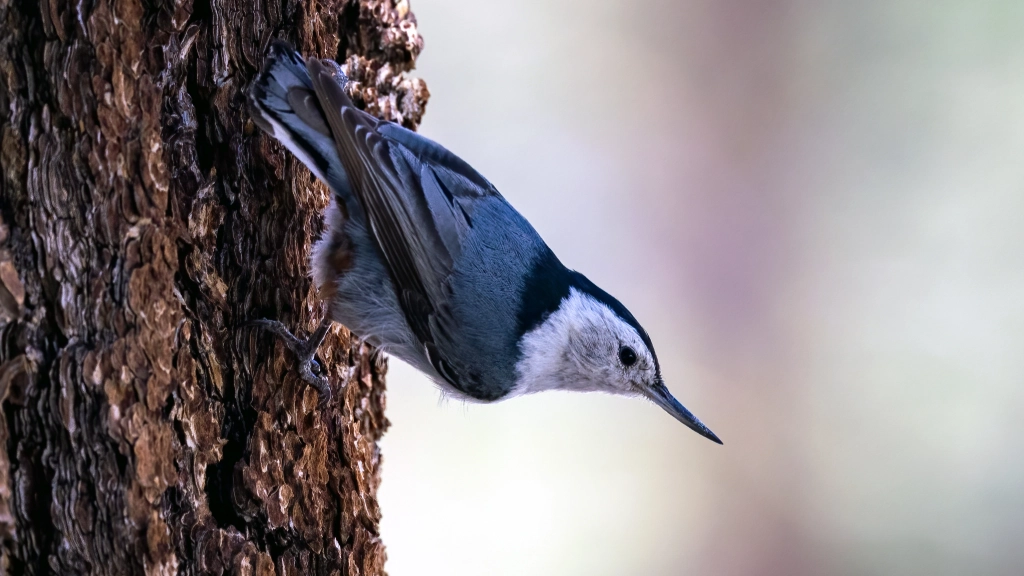
They primarily feed on insects and seeds, but will also take advantage of suet and other backyard bird feeders when available. The White-breasted Nuthatch is a cavity-nesting species and will excavate its own nest in dead or decaying trees.
BONUS BIRDS – The following two bird species share very similar behavior characteristics as the White-breasted Nuthatch but are uncommon in occurrence and therefore not official members of the 100 Common Species club.
Red-breasted Nuthatch – Species #38a
The Red-breasted Nuthatch (Sitta canadensis) is a small bird with a distinctive appearance and behavior that can be observed in the Central Valley of California. They are approximately four and a half inches long with a blue-gray back, a white face, and a rusty red breast. They have a short, straight beak that is perfect for extracting insects from tree bark, which is one of their primary food sources. These birds also have a habit of clinging upside down on tree trunks, using their sharp claws to support themselves as they search for food.
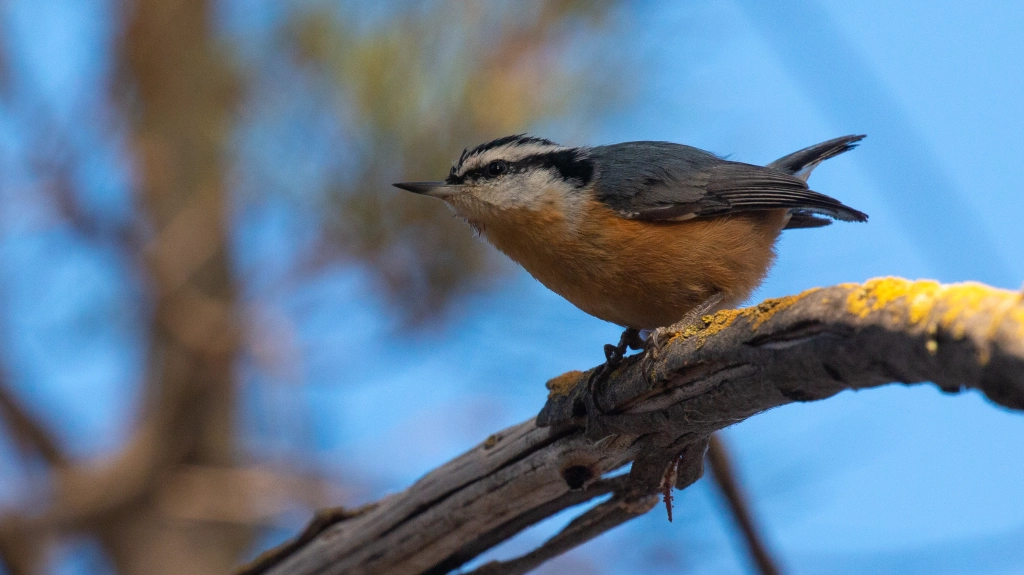
In terms of natural history, the Red-breasted Nuthatch is a year-round uncommon resident of the Central Valley, although they are more often seen during the winter months. They tend to nest in tree cavities, where they lay their eggs in a bed of bark, moss, and other soft materials. These birds are also known for their vocalizations, which include a distinctive yank-yank call that can be heard echoing through the trees. Overall, the Red-breasted Nuthatch is a charming and interesting bird that adds color and personality to the Central Valley’s natural environment.
Brown Creeper – Species #38b
The Brown Creeper (Certhia americana) is a small, slender bird found in the forests of North America. In the Central Valley of California, Brown Creepers are typically found in mature deciduous and mixed-coniferous forests, as well as in riparian woodlands. These birds are easily identified by their mottled brown plumage, which blends in perfectly with tree bark, allowing them to remain concealed while foraging.
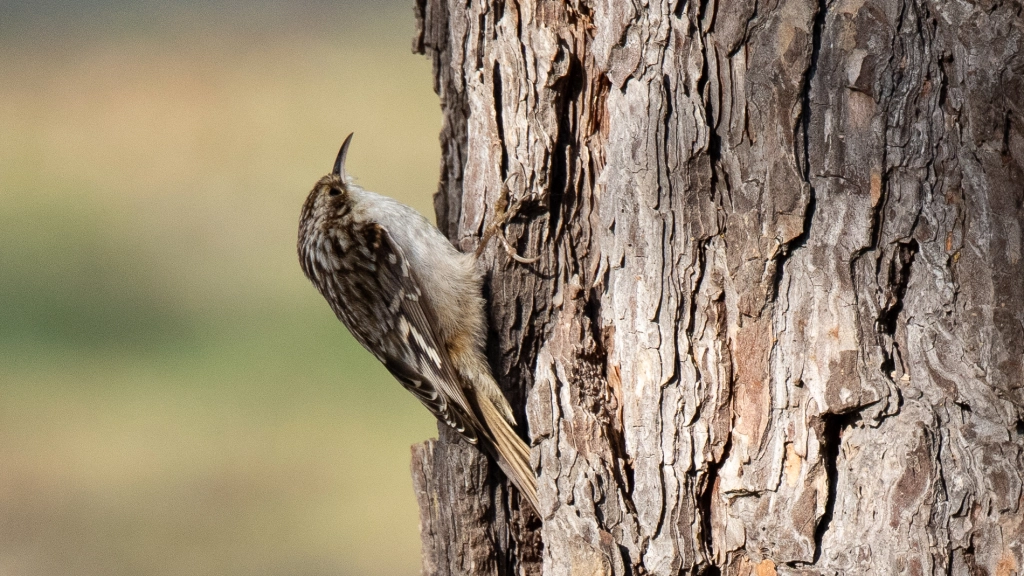
Brown Creepers are insectivores and primarily feed on small insects and spiders found on tree trunks and branches. They use their long, curved bills to probe crevices and under loose bark for prey. Brown Creepers also use their stiff, pointed tail feathers to help them climb trees in a spiral motion, much like a woodpecker.

